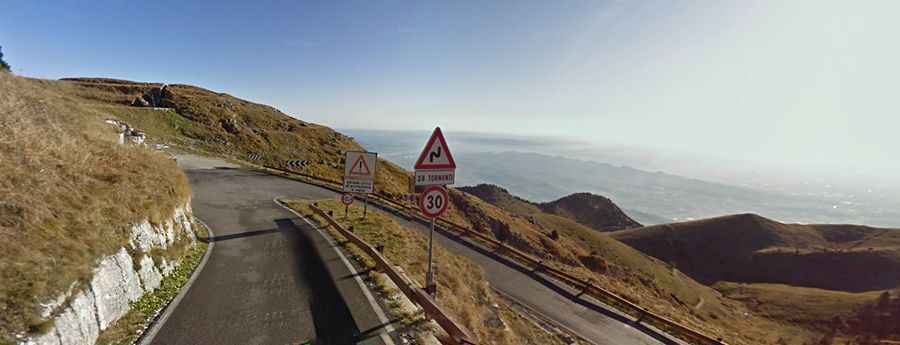Cima Grappa is a classic road of Giro d'Italia
Cima Grappa is a high mountain pass at an elevation of 1,775m (5,769ft) above sea level, straddling the provinces of Treviso, Vicenza, and Belluno in Italy. At the top is the Sacrario Militare del Monte Grappa, a monumental burial site for soldiers killed on both sides of World War I.

Where is Cima Grappa?
The pass is located in the Veneto region, in the northeastern part of the country.
Is the road to Cima Grappa paved?
Set high in the Grappa massif of the Venetian Pre-Alps, the road to the summit, also known as Monte Grappa, is fully paved. It’s called Strada Provinciale 140 (SP140). Starting from Semonzo, the climb is 18.8 km (11.68 miles) long.
How challenging is Cima Grappa?
At this length, the elevation gain is 1,530 meters. The average percentage is 8.1%. The first 11km of the climb comes at a relatively constant 7.4% gradient. The final 7.5km averages out at 8.9%, but the gradient ramps throughout, reaching up to 14% and making it impossible to ride in a constant rhythm. The Giro d’Italia has visited Monte Grappa many times. The road is very defiant, with steep parts and 30 hairpin turns, most of them numbered.
Why is Cima Grappa famous for?
Monte Grappa, considered sacred by the Italian people, is home to a military memorial and ossuary honoring 20,000 soldiers from the Italian and Austro-Hungarian armies who lost their lives in World War I and II. The Italian ossuary houses 12,615 soldiers, including 2,283 identified, while the Austro-Hungarian ossuary holds 10,295 soldiers, with 295 identified. Constructed post-war, the Ossarium stands as a tribute to the fallen. Monte Grappa witnessed significant events in both wars, marked by the Madonna del Grappa statue and a World War Museum. A radar missile base built by NATO post-war was later demolished in the 1970s. The summit also hosts a statue commemorating Partisans allegedly burned alive by Nazi-fascists during World War II.